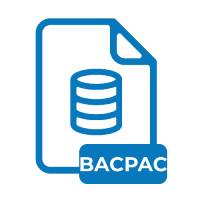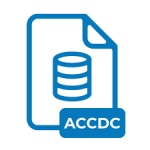.BACPAC File Extension

Compressed Microsoft SQL Database
| Developer | Microsoft |
| Popularity | |
| Category | Database Files |
| Format | .BACPAC |
| Cross Platform | Update Soon |
What is an BACPAC file?
The .BACPAC file extension is associated with compressed Microsoft SQL database files. These files are utilized for the backup and transfer of SQL databases in a compact and efficient manner.
More Information.
Initially introduced in SQL Server 2012, .BACPAC files were designed to simplify the process of migrating databases between different SQL Server instances and versions. They encapsulate both the database schema and its data into a single compressed file, facilitating seamless transfer and deployment.
Origin Of This File.
The .BACPAC file format was introduced by Microsoft as part of its SQL Server platform, providing a standardized method for exporting and importing SQL databases.
File Structure Technical Specification.
.BACPAC files typically consist of XML metadata describing the database schema, along with data stored in a binary format. They leverage compression algorithms to minimize file size while retaining database integrity.
How to Convert the File?
Windows: To convert .BACPAC files on Windows, you can utilize Microsoft’s SQL Server Management Studio (SSMS). Simply open SSMS, connect to your SQL Server instance, right-click on the target database, select “Tasks,” and then “Import Data-tier Application.” Follow the prompts to import the .BACPAC file into your SQL Server database.
Linux: On Linux systems, you can use the SQLPackage utility or the mssql-scripter tool to convert .BACPAC files. SQLPackage can be installed and used similarly to the Windows instructions mentioned earlier. For mssql-scripter.
macOS: For macOS users, the process is similar to that on Windows. You can use SQL Server Management Studio for macOS to import .BACPAC files. Alternatively, utilize the SQLPackage command-line utility by running the appropriate command in Terminal, as demonstrated for Windows.
Android & iOS: Converting .BACPAC files on mobile platforms like Android and iOS isn’t directly supported due to the complexity and size of SQL databases. However, you can transfer the .BACPAC files to a compatible system, such as a desktop or server environment, and perform the conversion using the methods mentioned above.
Other Systems: For other operating systems, compatibility may vary. Third-party tools or database management systems may offer support for .BACPAC files, albeit with limitations. Conversion to a compatible format, such as CSV or SQL script, may be necessary for use on alternative systems.
Advantages And Disadvantages.
Advantages:
- Portability: .BACPAC files can be easily transferred between different SQL Server environments.
- Compactness: Compression reduces file size, optimizing storage and transfer efficiency.
- Comprehensive Backup: .BACPAC files encapsulate both database schema and data, ensuring comprehensive backup and recovery.
Disadvantages:
- Compatibility: .BACPAC files are primarily compatible with Microsoft SQL Server environments, limiting interoperability with other database systems.
- Performance Overhead: Decompression may introduce slight performance overhead during database deployment.
How to Open BACPAC?
Open In Windows
- Import .BACPAC files into SQL Server Management Studio for Windows.
- Utilize SQLPackage command-line utility for deployment.
Open In Linux
- Import .BACPAC files into a SQL Server instance running on Linux using SQLPackage or mssql-scripter.
Open In MAC
- Use SQL Server Management Studio for macOS to import .BACPAC files.
- Alternatively, deploy .BACPAC files through SQLPackage via command-line interface.
Open In Android
- .BACPAC files are not directly supported on mobile platforms. Transfer to a compatible system for access.
Open In IOS
- .BACPAC files are not directly supported on mobile platforms. Transfer to a compatible system for access.
Open in Others
- Third-party tools may offer limited support for .BACPAC files on alternative database platforms. Conversion to a compatible format may be necessary for full functionality.













